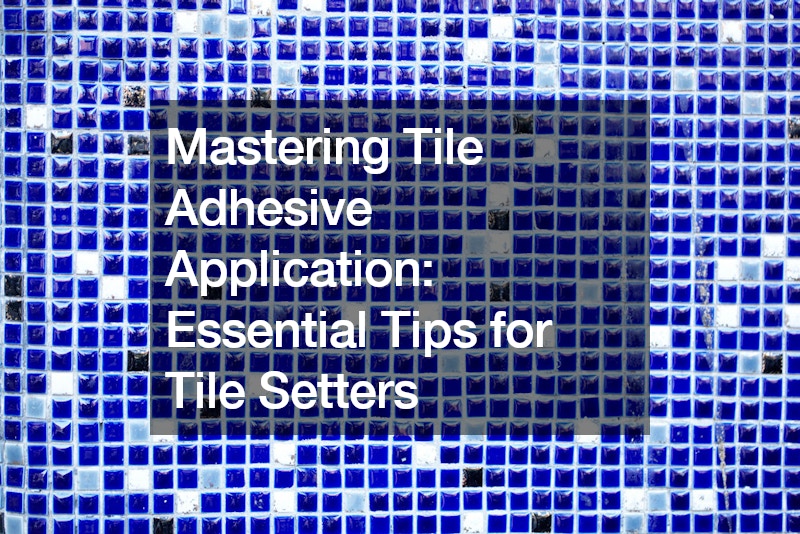

Tile adhesive application is a critical aspect of ensuring durable and aesthetically pleasing tile installations. When done correctly, it ensures that tiles remain firmly bonded to the substrate, withstand heavy loads, and maintain their integrity over time. However, improper application methods can lead to issues like hollow sounds, cracked tiles, and bonding failures. To achieve professional results, tile setters must adhere to proper techniques and standards outlined in this guide.
Understanding Common Issues with Tile Adhesive
Two primary reasons contribute to the occurrence of hollow sounds and other installation issues in tiles: substandard tile adhesive and incorrect application methods. Substandard adhesive lacks the necessary bonding strength and durability required for long-lasting installations.
On the other hand, incorrect application methods such as spot bonding or swirling motions can result in inadequate mortar coverage, leading to weakened tile bonds and potential failures over time.
Correct Application Methods for Tile Adhesive
The recommended method for applying tile adhesive is straight troweling. This technique involves using a notched trowel to spread the adhesive evenly over the substrate in straight, parallel ridges. By firmly pressing the tile into the adhesive and moving it in one direction perpendicular to the ridges, tile setters can eliminate air voids and achieve maximum mortar coverage. This method is particularly effective for large format tiles and helps prevent issues like trapped air, which can cause bonding failures and cracked tiles.
Importance of Proper Mortar Coverage
According to the American National Standards Institute (ANSI), achieving adequate mortar coverage is crucial for the longevity and performance of tile installations. For interior applications, a minimum of 80% mortar coverage is required, while exterior and wet environments demand 95% coverage. Proper coverage ensures tiles can withstand heavy impacts and loads without compromising their structural integrity.
Factors Influencing Tile Adhesive Application
Several factors influence the effectiveness of tile adhesive application, especially when working with large format tiles or tiles with inherent warpages. These factors include tile warpage, domed tiles, and trapped air. To compensate for these challenges, tile setters may adjust the thickness of the adhesive or employ back-buttering techniques, where the adhesive is applied directly to the back of the tile to enhance coverage and adhesion.
Choosing the Right Trowel and Notch Size
Selecting the appropriate trowel and notch size is crucial for achieving optimal mortar coverage. The trowel notch size should correspond to the tile size and substrate conditions. Referencing recommended notch sizes based on tile dimensions ensures that sufficient adhesive is applied to create a strong bond between the tile and substrate.
Checking and Ensuring Proper Application
After installing several tiles, it’s essential to inspect the mortar coverage to ensure uniformity and completeness. Check for proper distribution of trowel ridges and ensure no areas where mortar has been omitted on the substrate. This meticulous approach helps identify and rectify potential issues early in the installation process, ensuring a high-quality finish meeting professional standards.
Conclusion
Mastering tile adhesive application is essential for tile setters aiming to deliver durable and visually appealing tile installations. By following correct application techniques such as straight troweling, ensuring adequate mortar coverage, and using appropriate tools and notch sizes, tile setters can avoid common pitfalls and achieve consistent, reliable results. Adhering to ANSI standards and best practices in tile adhesive application ensures that installations are robust, withstand heavy use, and maintain their aesthetic appeal over time.
Incorporating these essential tips into your tile setting projects will not only enhance the quality of your work but also contribute to the overall longevity and performance of tiled surfaces. Whether you’re working on a residential renovation or a commercial project, mastering tile adhesive application is key to achieving professional success as a tile setter.
.



